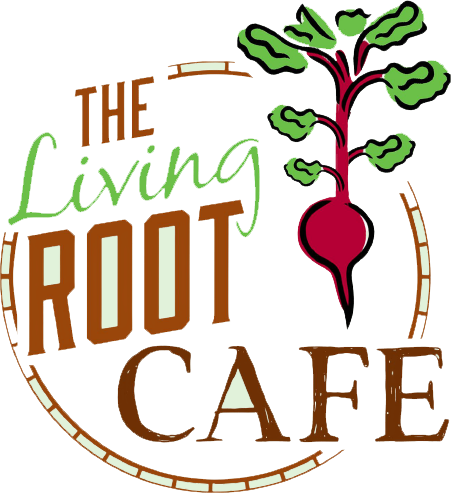Rolled oats themselves are inherently gluten-free. However, cross-contamination can occur during processing if they are processed in facilities that also handle gluten-containing grains such as wheat, barley, or rye. In this context, the following can be considered gluten free: Acai bowl, Banana-oat muffins, Black bean brownies, and Granola. However, if you have celiac disease or are highly gluten-intolerant, we recommend you stay clear of these options.
Yes, the Vegan Hash, Country potatoes, Tofu Scramble, Spicy Raw Taco, Garlic Hummus, all the soups, and all the salads are free of any ingredients with gluten.
LRC uses all natural sweeteners that have a lower glycemic index than white or brown sugar. These include: agave, dates, coconut sugar, maple syrup and molasses. Comparatively, agave syrup tends to have the lowest glycemic index among the sweeteners used, followed by dates, maple syrup, coconut sugar, and molasses.
No. It is the position of LRC corporate owners that the mere fact scientific consensus generally holds that GMOs currently on the market are safe to eat, makes it unsafe simply because of the lack of scientific consensus of what “safe” means. GMOs lack rigorous safety testing because the government doesn’t require it. According to the Environmental Working Group website: “The federal government requires strict safety evaluations before new drugs go on the market but does not mandate similar safety studies for genetically modified crops. The government does not require that genetically modified food be tested for carcinogenicity, for harm to fetuses or for risks over the long term to animals or humans. Few such studies have been conducted by independent scientific institutions.”
Using a high-powered hydraulic press machine, there are two (2) steps to the process:
1.) Raw produce is shredded to a small particle size which is then thrust into a special filter bag,
2.) Two stainless steel plates are pressed together to squeeze the filter bag to release the juice. Juices are collected in stainless steel bins, then mixed into the different blends and bottled immediately.
We buy raw, fresh organic produce from local farms and/or wholesalers for all our fruits and vegetables. We buy organically-grown oranges from Old Grove Orange, a Redlands farm. If we are unable to source organically, we source from local farmers who farm cleanly and sustainably (which is often at a higher standard than what is required for organic certification). We always source organically those items identified on the EWG’s “Dirty Dozen” list. We continually strive to support our local farming communities.
The length of time our juices stay fresh is directly related to three factors: air, temperature and presence of natural preservatives. Once the juice is extracted, it begins the slow process of oxidation the longer it is exposed to air. As such, the juices are bottled and refrigerated within minutes to minimize oxidation during this process.
Once refrigerated, the presence of natural preservatives or antioxidant potency in the juice determines the shelf life. Juice blends with a higher naturally-occurring sugar content will spoil quicker, especially if not kept cold. For this reason, orange, lemon, or lime juice is used in the blend to extend the shelf life. The greater the antioxidant potency and the colder the temperature, the longer a juice will stay fresh.
In general, most of our juices will stay fresh for 5-10 days if kept at 35 to 40 degrees Fahrenheit. The juices with a higher antioxidant content may last as long as 15-20 days if kept cold. To maximize the shelf life, we recommend putting your juices in a second refrigerator and turn the temperature to 38 degrees; second refrigerators are opened less frequently than your normal kitchen refrigerator; more frequent opening and closing affects the average temperature of the juices.
Cold-pressing raw produce squeezes the juice out, leaving the pulp, therefore the only nutrient lost is fiber.
The extracted juice is a concentrated liquid of pure vitamins, minerals, enzymes and other phytonutrients from the plant. Having said that, fresh juices are only as nutrient dense as the produce they’re made from. This is why we strive to source from local farms as much as possible because they tend to prioritize quality, flavor, and nutrient density over factors like transportation logistics and shelf life.
Some sources say enzymes begin to degrade after only 20 minutes from time of juicing due to oxidation, other sources say enzyme deactivation only begins to occur when temperatures exceed 118 degrees Fahrenheit. Nothing we do generates that kind of heat, and we bottle our juices within 20 minutes from extraction, so you can rest easy knowing you’re consuming the best you can get.
From the moment fruits and vegetables are harvested, they begin to spoil via slow oxidation. Juicing increases the exposure of the plant cells to oxygen and this is what destroys some of the nutritional value of juice. But by bottling the liquid as soon as the juice is extracted, we are able to slow the oxidation process significantly due to there being little to no air (oxygen) in the bottle to oxidize the juice and thereby retaining most of the nutrition. Compared to other forms of juicing (blenders, extractors, etc.) or processed juices, our cold-pressed juices give you the freshest, most nutrient dense juices anywhere.
We do not add anything to our juices but juice (the clear liquid you see before shaking the bottle is the water naturally-occurring in the fruits or vegetables). To slow down the oxidation process even more, we include orange, lemon or lime juice in all of our juice blends as these have natural preservatives (citric acid) that function as antioxidants

